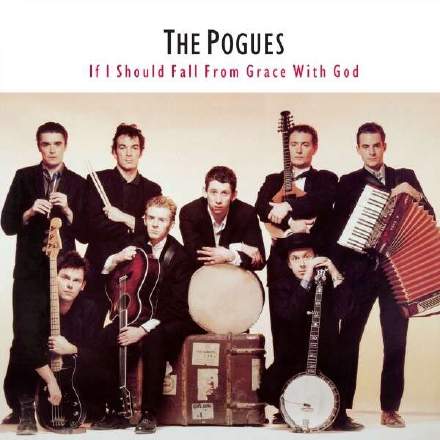
Like Cher’s 'Believe' or Phil Collins’ 'In The Air Tonight', this is another of those classic songs where the commentary has always felt rather patchy to me. You’ll find plenty of column inches devoted to the words, of course, often considering parallels with the late Shane MacGowan’s famously turbulent lifestyle, or arguing over which of the lyrical slurs have aged worst. Much has also been said about the lengthy production process, and the key role of Kirsty MacColl’s performance in breaking through the band’s creative logjam. But I’d like to focus instead on some other fascinating aspects of this song that feel to me like they don’t quite get the credit they deserve.
First off, the song’s structure is unusual in many respects. To be honest, the traditional ‘verse/prechorus/chorus’ section labels feel a bit inadequate here, but just for the sake of discussion let’s say we have verses at 0:10 (“It was Christmas Eve”), 0:44 (“Got on a lucky one”), and 2:48 (“I could have been someone”); prechoruses at 1:29 (“They got cars big as bars”), 1:41 (“You were handsome”), and 2:15 (“You’re a bum, you’re a punk”); and choruses (“The boys of the NYPD choir”) at 1:53, 2:27, and 3:13. Broadly speaking, that leaves us with the following basic song layout:
- Verse 1
- Verse 2
- Prechorus 1
- Prechorus 2
- Chorus 1
- Instrumental based on the Prechorus
- Prechorus 3
- Chorus 2
- Instrumental based on the Verse
- Verse 3
- Chorus 3
- Outro
Honestly, I can’t think of any other song quite like it, and things are made even more unorthodox by the transition from slow 4/4 simple time for the opening two verses into a faster 12/8 compound time of the remainder of the song – in particular, I love the way this recasts the verse material in compound time at 2:48. Not that this kind of tempo/metre gearshift is uncommon in the folk music styles from which The Pogues drew so much inspiration. It’s just that this tactic has so rarely made its way into the charts! There’s also a metric flexibility here that I strongly associate with the folk-music traditions of many different cultures. For example, The Pogues aren’t afraid to drop a beat from the end of the second verse, thereby starting the little intro recap at 1:17 a little earlier than expected – or indeed to drop three beats from the end of that intro recap compared with its initial two-bar statement at the very start of the song. And then when the verse section repeats in its compound-time version at 2:48, it’s extended by a beat instead, effectively building anticipation towards the final chorus.
I also like how the chorus always feels like it’s going to be four bars long, but each time its fourth bar is kind of stolen to be the first bar of the subsequent song section, in other words the instrumental prechorus at 1:53, the instrumental verse at 2:36, and the outro at 3:22. And, in a sense, this same technique is at play with that shortened intro recap, where the intro section’s original second-beat move to the tonic D major chord is repurposed in the recap as the first downbeat of the 12/8 section.
Another great feature of this song is that, although it only uses pretty straightforward D, G, A, and Bm chords, their harmonic rhythm (ie. the rhythm with which those chords change) greatly improves the musical impact and interest. A lot of songwriters aren’t very imaginative in this respect, sticking to some kind of regular rhythmic pattern for the whole timeline. Maybe they’ll use a simple chord-per-bar scheme, as in Harry Styles’ 'As It Was'; or two bars per chord like Wham’s ‘Last Christmas’; or two chords per bar like Imagine Dragons’ 'Radioactive'. And there’s an army of songs that alternate straight and pushed chords – just off the top of my head I can think of Billie Eilish’s 'Everything I Wanted', Ed Sheeran’s 'Thinking Out Loud', Otis Redding’s '(Sittin' On) The Dock Of The Bay', the Spin Doctors’ ‘Two Princes’, and Tracy Chapman’s ‘Fast Car’.
The Pogues, on the other hand, are much more inventive, contrasting the general chord-per-bar feel of their verses with the faster chord-per-beat prechoruses, but also speeding up the chord changes towards the end of each verse section as a kind of structural punctuation as well. The chorus is my favourite moment in this regard, however, with a cool sort of accelerating harmonic rhythm where a full bar of G is followed by two half bars of D and Bm and then a chord-per-beat rhythm for the remaining D, G and A chords.
So all in all, I think I can see where MacGowan was coming from when he referred to this song as the band’s ‘Bohemian Rhapsody’, because I think there’s a lot of musical nuance hiding under its veneer of simple Christmas singalong.










